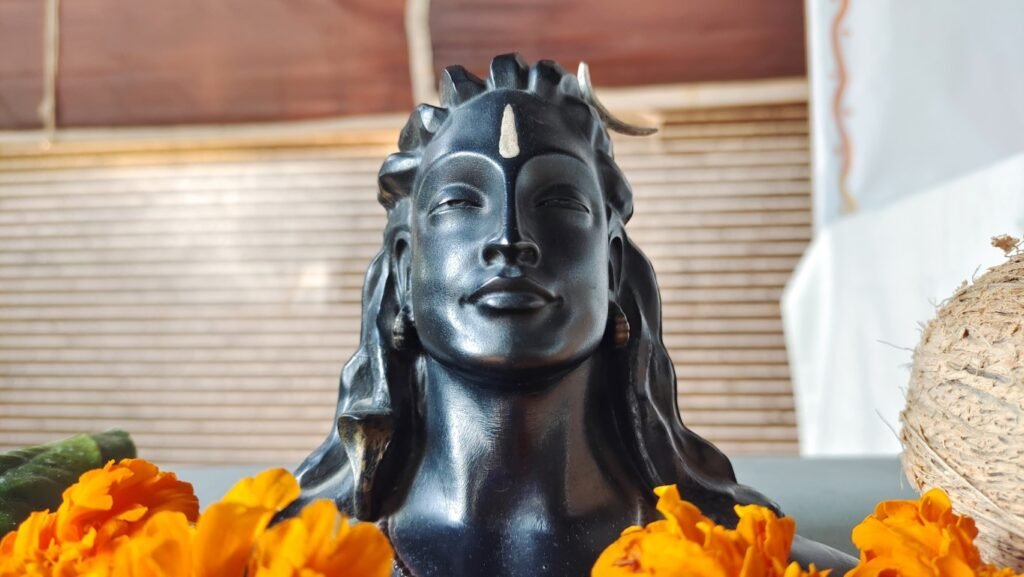Shravan (also known as Sawan) is a sacred month according to the Hindu culture. It is dedicated to Lord Shiva; thus devotees majorly worship Shiva (especially on Mondays) to attain his blessings. It is considered as the perfect time for spiritual cleansing that is done through fasting, chanting and meditation. Many important Hindu festivals like Janmashtami, Rakshabandhan, Teej, etc. also fall in this month. Shravan month plays a key role not just in our spiritual life but also in our physical and mental health. Why is the month of Shravan considered the holiest in the Hindu calendar, and what makes its customs so deeply connected to both our health and our soul? Let’s go further to find all the answers and explore the various aspects of Shravan.
1. What is Shravan month:
Shravan is the 5th month in the Hindu calendar and is one of the holiest month in the year as per Hindu tradition. It is also known as ‘Avani’ as per Tamil scriptures. According to Vedic Astrology, this month begins when sun enters in Leo ( One of the Zodiac Signs). It is believed that on Poornima (Full Moon Day), the Shravan Nakshatra rules the skies and hence this month is called ‘Shravan’. Each and every day of this month is considered auspicious to begin something new. Shravan is the first month of Chaturmas period as Lord Vishnu enters Yoga Nidra for 4 months from this month and Shiva takes charge of the entire creation.
Shravan typically falls in monsoon season beginning from mid to late July and ending in late August. However, specific dates of Shravan differ region-wise. In this year, Shravan is observed from July 11 to August 9 in North India whereas from July 25 to August 23 in South and West India.
2. Shravan month’s relation with Shiva
While many know that Shravan is dedicated to Lord Shiva, very few are aware of the reasons behind this tradition. There are various mythological reasons of worshipping mainly Lord Shiva in this month. However, the most commonly believed reason lies in the story of Samudra Manthan. When Samudra Manthan (churning of ocean) took place, Shiva drank the poison (Halahal) extracted from the ocean in this month (Shravan) itself. To stop the effect of poison, many gods and sages offered him the holy water of Ganga. Since then, the ritual is followed to offer water, bel leaves, milk, curd and honey on Shiv Linga in this month.
Moreover, another tale related to Shravan is about Markandeya (son of Markan Rishi). Markandeya recieved mercy of Lord Shiva in Shravan month for composing Mahamrityunjay Mantra. Along with the worship of Shiv Linga, other practices such as Rudrabhishek, Mahamrityunjay Jaap, recitation of Shiv Chalisa and Rudrashtak are highly recommended in this month to attain the grace of Shiva. Many women observe fast on all the Mondays of Shravan (Shravan Somvar) to get husband like Lord Shiva. Kanwar Yatra carried out in North India is a prime attraction in Shravan month. It is a pilgrimage wherein lakhs of Kanwariyas (participants of pilgrimage) travel to Gangotri, Haridwar, Gaumukh and Deoghar to collect the pious Gangajal (holy water of Ganga) for offering it to Shiva. In short, Shravan witnesses a remarkable wave of Shiva devotion throughout the month.
3. Weather, diet and science of fasting in Shravan:
As mentioned earlier, Shravan falls when the monsoon is at its peak. Frequent rainfalls and cloudy skies are noticed this month. Although nature appears fresh and vibrant in Shravan, the
climate is cool with minimal sunlight. This weather and climate conditions have adverse effects on our body; especially on the digestive system. The minimal sunlight and cool climate results in a weakened digestive system and reduced heat in the pancreas. Thus, we experience several health issues related to digestion. To cope up with these health issues and physical changes, fasting or consumption of light meals (Satvik Meal) is highly recommended in the period of Shravan. Fasting and consumption of Satvik Meal in this period aids digestion, boosts immunity and promotes detoxification helping you align with the shift in weather and overcome potential health challenges.
What to eat:
- Satvik food
- Rock Salt
- Food made in pure Ghee or Peanut oil
- Fruit Salad
- Curd
What to avoid:
- Onion
- Garlic
- Non-veg
- Regular (white) salt
- Intoxicants (Liquor, tobacco, cigarette, etc)
4. Effective yoga to maintain a healthy lifestyle in Shravan:
Apart from a proper diet, practising yoga daily is also essential to maintain good health in the month of Shravan. Here are some effective yogasanas that you can practice daily to keep yourself healthy throughout this month:
Surya Namaskar (sun salutation):
Surya Namaskar is a series of 12 yoga asanas performed sequentially. It gives exercise to your complete body. Surya Namaskar has multiple physical and mental benefits. One of the major benefits is it boosts your immune system.
Vrikshasana (tree pose):
This asana is done by standing on one leg with the other foot placed on the inner thigh of the
standing leg, while extending the arms upwards. It helps you strengthen legs, improves balance
and posture, and enhances focus.
Bhujangasana (cobra pose):
Bhujangasana is one of the asanas involved in Surya Namaskar. It is a yoga posture where one
lies on their stomach and lifts their chest, resembling a cobra raising its hood. It strengthens
your lungs, spine and helps you combat the monsoon-induced indolence.
Anulom Vilom and Bhramari:
(Anulom Vilom)
(Bhramari)

